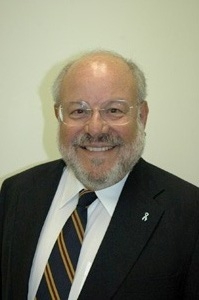By Karl Grossman
Can a play influence public perception of our shared atomic history enough to shift the conversation away from a presumed nuclear renaissance and into a more critical, life-protective examination of what this technology is and could do to us all?
Playwright and podcaster Libbe HaLevy believes it can.She spent 13 years researching and writing that play Atomic Bill and the Payment Duewhich will have its premiere staged reading next week, on September 9th, as a featured presentation at the 50thanniversary celebration of the establishment of the Peace Resource Center at Wilmington College in Ohio.
For 14 years, HaLevy has hosted the podcast Nuclear Hotseat, aired on 20 Pacifica affiliate radio stations throughout the United States and, as its website (NuclearHotseat.com) says, has been tuned into and downloaded by audiences in over 124 countries around the world.
It was while working on a 2012 episode focusing on the Trinity atomic bomb test in New Mexico that she became aware of journalistic irregularities around that event that piqued her interest.
The play, says its program notes, is a "true story about media manipulation at the dawn of the Atomic Age and the New York Times reporter who sold his soul to get the story."
That reporter is William Laurence, a Pulitzer Prize-winning science reporter at the Times. In 1945, General Leslie Groves, director of the Manhattan Project, arranged with Times
publisher Arthur Hays Sulzberger, and Edwin James, its managing editor, to have Laurence secretly inserted into the Manhattan Project. He was the only journalist embedded in the crash program to build the first atomic bombsa position he relished.
Before World War II broke out and the splitting of the atom first occurred, Laurence wrote in the Times about how atomic energy could for mankind return the Earth to the Eden he had lost. He witnessed the Trinity test in New Mexico in July 1945, and wrote the Manhattan Project press release that was distributed afterwards, which claimed only that an ammunition dump exploded and no one was hurt. He had arranged a seat on the Enola Gay for its dropping of an atomic bomb on Hiroshima, but missed getting ona bitter disappointment. But he did fly on an airplane that followed the B-29 that dropped an atomic bomb on Nagasaki. When the war ended, he wrote articles in the Times glorifying the Manhattan Project and for many years promoted nuclear energy in his stories ignoring the lethal impacts of radioactivity.
HaLevy sensed a play lurking in the story.
HaLevy has a long background in theatre and playwriting, with more than 50 presentations of her plays and musicals, and multiple awardsmost under her previous name, Loretta Lotman.
And she was exposed to the dangers of nuclear energy, having been in a house in Pennsylvania one mile away from the Three Mile Island nuclear power plant when it underwent a meltdown in 1979. She had been staying with friends on a badly timed vacation.
HaLevy authored a book about her experience,Yes, I Glow in the Dark! One Mile from Three Mile Island to Fukushima and Nuclear Hotseat, published in 2018.Dr. Helen Caldicott, author of Nuclear Madnessand many other books on nuclear technology ,has said of HaLevys book that it mustbe read by all people who care about the future of the planet and their children."
Of her book, HaLevy has said: It's the story of what happened when I found myself trapped one mile from an out-of-control, radiation-spewing nuclear reactorhow it impacted my life, health, sense of selfand what it took to recover. Its a personal memoir, a guidebook on what the nuclear industry gets away with and how they get away with it, and a directory of resources and strategies with which to fight back.The information ranges from 1950's Duck and Coverand Disneys Our Friend the Atomto how I learned to fight nuclear with facts, sarcasm... and a podcast.
HaLevy recounted in a recent interview that in 2012, with Nuclear Hotseat having begun in the aftermath of Fukushima a year earlier, she read that more than one press release was written about the Trinity Test before the blast, when no one knew exactly what it would do. She called me for more information. She was right: there had been four press releases written by Laurence in advance to cover every eventuality from nothing to see here to martial law, evacuate the statea clear violation of journalistic ethics. I referred her to Beverly Ann Deepe Keever, who had written the book News Zero: The New York Times and the Bomb,published in 2004.Laurence is a main figure in it.
(Note: You can view every article as one long page if you sign up as an Advocate Member, or higher).





